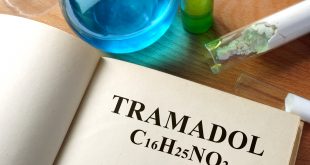Sodium channel blockers are called so because they cause decreased influx of Na+ in cardiac cells, during phase 0. This is why they are also called membrane stabilizing drugs. 1a and 1b drugs have more affinity for channels which are refractory or depolarized (damaged myocardial cells). More frequently the channels are opened; more will be the effects of drugs.
Ic has generalized depressing effects having no preference. Due to greater depressant effects, they are less commonly used. Ic is used in refractory arrhythmias.
CLASS 1A:
- 1-10 sec blockade
- Preferential for activated Na+ channels
- Moderate phase-0 depression
- Slightly increased action potential in (A.P) duration
- Increase effective refractory period (E.R.P)
Ia drugs cause a decrease in AV conduction (can be 0-4+). As they block conduction at a rate of 0-2+, they have moderate depressing effect.
Quinidine
Quinidine is a derivative of quinine.
Pharmacological Actions
Heart
- Decrease in automaticity of heart (decrease discharge, decrease phase 4 depolarization)
- Decrease in responsiveness of cardiac cells to excitation (atrial, nodal and ventricular cells). This causes decrease in propagation of impulses.
- As increase 1a drugs cause an increase in refractory period, they are useful for treatment of re-entrant arrhythmias (after MI).
- Direct depressant effect on cardiac cells.
- Has vagolytic effect (atropine like effects)
- Cause blockage of alpha blocking effect (not contributing to arrhythmias)
ECG changes
- QT interval increases
- PR interval is prolonged due to AV block
- May cause inversion of T wave.
Pharmacokinetics
Rapidly absorbed after oral route of administration. 80% of the drug is bound to plasma proteins. 75% of drug is metabolized in liver. Half life is about 6 hours.
Uses
- Mainly used for treatment of supraventricular, nodal and ventricular arrhythmias, especially after MI and DC shock.
- Also used after treatment of atrial flutter and fibrillation to maintain sinus rhythm.
Adverse Effects
- Anorexia
- Nausea
- Vomiting
Cinchonism (over dosage or toxicity)
Features are:
- Tinnitus
- Headache
- Vertigo
- Ataxia
- Deafness
- In severe cases psychoses
As acting on CVS, may also cause hypotension and cardiac failure.
Due to anticholinergic effect, cause dry mouth, blurred vision and tachycardia.
Drug Interactions
Digoxin is displaced from binding sites, causing increased digoxin, leading to toxicity.
Dose
200-400 mg thrice or twice daily.
Procainamide
Procainamide has similar effects, except it is least anticholinergic. It is not commonly used in therapeutics because on prolonged administration may cause increase in levels of antinuclear factor (ANF) which in 30% of patients lead to SLE (systemic lupus erythramatosis).
Rest of effects and usage is same. Procainamide is derivative of procaine (local anesthetic).
Disopyramide
Disopyramide has the same effects like quinidine, but has the highest anticholinergic activity in class 1a.
CLASS 1B:
General Features
- Blockade for < 1sec
- Preferential for inactivated Na+ channels (only a few activated)
- Minimal phase-0 depression
- Substantial decrease in action potential duration
- Decreased refractory period
- Shortened plateau
- Shortening of QRS complex
- Have least effect on conduction
These drugs block conduction at rate of 0- +1, thus used in treatment of Digitalis induced arrhythmias because they have least effects on AV conduction (lignocaine, phenytoin)
Lignocaine (Local anesthetic, membrane stabilizing effect)
Pharmacokinetics
Lignocaine undergoes extensive first pass metabolism. It has very low bioavailability after oral intake. It is given I/V or I/M.
It is mainly metabolized in the liver by dealkylation.
Plasma half life is about 90 hours.
The metabolism depends on the liver blood flow.
Uses
Used both in supraventricular and ventricular arrhythmias, after MI and digitalis induced.
Adverse Effects
May cause hypotension and bradycardia.
Other effects
Dizziness, in over dosage convulsions and abnormal sensations (paresthesias)
Dose
Given I/V so range is 1-5 mg/kg body weight. I/V bolus injection may be given one time. After this by I/V infusion until arrhythmias are controlled.
Phenytoin (Antiepileptic)
Antiarrhythmic drug specific for digitalis induced arrhythmias. It is also used for ventricular arrhythmias in children.
Dose is 100 mg by I/V route.
Mexiletine and Tocainide have the same uses. Their half life is around 10-11 hours.
CLASS 1C:
Less commonly used group of drugs, only reserved for the resistant ventricular arrhythmias.
- Potent blockade for > 10 sec
- Predominantly block activated Na+ channels
- Marked phase -0 depression
- Minimal effects on A.P duration & E.R.P
- Although no effects during refractory period, have maximum effects on AC conduction
Depression is up to 0- +4. This is why this group is less commonly used.
Flecainide
Pharmacokinetics
Mainly given by oral route.
Plasma protein binding is about 30-60%.
Excreted both by metabolism in liver and glomerular filtration.
Plasma half life is about 14 hours, which is further increased in patients suffering from cardiac and renal diseases and the elderly.
Due to long half life, it is less commonly used.
Uses
- Treatment of ventricular arrhythmias (not responding)
- Supraventricular arrhythmias
A type of arrhythmias known as the Wolf Parkinson White syndrome. It occurs in people having anomalous and accessory AV pathway, due to which they experience supraventricular arrhythmias (atrial flutter and fibrillation). To treat them, these drugs are effective. They less commonly respond to other drugs.
Adverse Effects
- May cause marked depression of AV conduction
- Hypotension
- Bradycardia
- Predispose to other arrhythmias in over dosage.
Dose
300-800 mg in divided doses.
Other drugs in the category have more or less the same effects.
Continue Reading
Beta Adrenergic Blockers (Class II antiarrhythmics)
Potassium channel blockers (Class III antiarrhythmics)
Calcium channel blockers (Class IV antiarrhythmics)
Miscellaneous antiarrhythmic drugs
 howMed Know Yourself
howMed Know Yourself





Great article. I’m experiencing some of these issues as well..